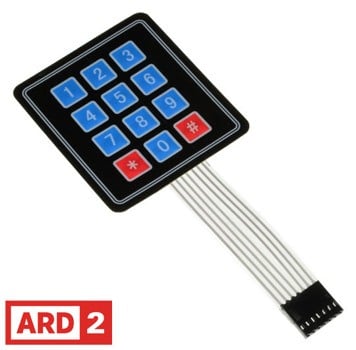Understanding Membrane Switches Over: The Trick to Reputable and resilient Controls
Membrane layer switches over stand for a vital facet of modern-day user interface style, mixing capability with strength in various applications. As we check out the intricacies of membrane switches, it becomes clear that their duty in boosting control systems is both extensive and complicated, raising inquiries concerning exactly how finest to leverage their abilities in future advancements.
What Are Membrane Buttons?
Membrane layer switches are an innovative service in the world of interface technology, combining capability and layout effortlessly. These tools work as an interface between users and digital systems, integrating numerous elements right into a compact style. Generally constructed from versatile, thin layers of materials, membrane switches are developed to react to touch, making it possible for customers to connect with machinery and electronic devices efficiently.
The main aspects of a membrane layer button consist of a printed circuit layer, visuals overlay, and a spacer layer that protects against unintended activation. The visuals overlay can be customized to show brand identification or individual choices, boosting visual appeals while ensuring use. Membrane switches are generally made use of in numerous applications, including clinical gadgets, customer electronics, and commercial tools, owing to their resilience and resistance to ecological aspects such as dampness and dirt.
Among the key advantages of membrane switches is their capability to stand up to deterioration, making them excellent for high-traffic settings. Additionally, they are lightweight and need marginal space, permitting innovative designs in product advancement. Generally, membrane switches over represent a efficient and practical choice for modern digital user interfaces, weding modern technology with user-centric layout principles.

Exactly How Membrane Layer Switches Job
The operation of membrane layer changes hinges on a straightforward yet efficient mechanism that converts individual input into digital signals. When an individual presses the button, the leading layer deforms, permitting a conductive aspect in the circuit layer to make contact with an equivalent conductive pad on the underside of the graphic overlay.
The layout of membrane buttons can differ, however they typically integrate domes or tactile components to supply feedback to the user, boosting the general experience. The products made use of in membrane layer buttons, such as polyester or polycarbonate, add to their sturdiness and resistance to environmental aspects, consisting of moisture and dust. In addition, the printed circuits are usually encapsulated, which shields them from damage in time.

Advantages of Membrane Layer Buttons
Among the main advantages of membrane switches is their convenience in layout, permitting them to be tailored to satisfy particular user needs and visual demands. This flexibility includes various sectors, where different shapes, dimensions, and colors can be employed to boost individual interaction and aesthetic appeal.
Additionally, membrane layer buttons are known for their sturdiness. Constructed from durable materials, they are immune to dust, wetness, and physical wear, which dramatically prolongs their life-span compared to standard mechanical switches. This durability makes them especially appropriate for high-traffic atmospheres and applications calling for longevity.

In addition, membrane buttons provide a streamlined account, resulting in a thinner layout that can be integrated right into different devices without including bulk. This attribute not only enhances the visual allure yet additionally adds to a more ergonomic item layout.

Applications of Membrane Layer Switches
User-friendly and functional, membrane buttons find applications throughout a vast array of markets, consisting of medical tools, consumer electronic devices, and industrial tools. In the medical area, these switches are integral to tools such as analysis tools, individual monitoring systems, and infusion pumps, where integrity and simplicity of cleaning are critical. Their capacity to stand up to extreme atmospheres and preserve capability makes them ideal for such applications.
In customer electronics, membrane layer buttons are used in products like microwaves, washing devices, and remotes - membrane switch. Their sleek layout enables home user-friendly interface, boosting the total individual experience while providing sturdiness and resistance to tear and put on
Commercial equipment also gains from membrane buttons, especially in control panels for equipment and automation systems. These buttons provide protection versus dirt and moisture, ensuring consistent efficiency in tough settings. Their adjustable attributes permit suppliers to tailor them to details functional needs, boosting performance and performance.
Choosing the Right Membrane Layer Change
When selecting a membrane layer switch, it is necessary to think about various variables that influence efficiency and suitability for details applications. The main factors to consider include ecological conditions, responsive feedback, longevity, and style specifications.
First, analyze the operating atmosphere; buttons subjected to moisture, chemicals, or severe temperatures require details materials to guarantee longevity and capability. Next off, examine the need for responsive comments. Depending on user interaction, some applications might benefit from a tactile reaction to confirm activation, while others may favor a non-tactile design for visual reasons.
Sturdiness is another essential aspect; membrane switches should be made to stand up to constant usage, impacts, and abrasion. Make certain the selected switch can sustain the anticipated lifecycle, especially in high-usage scenarios.
Final Thought
In verdict, membrane layer switches serve as vital parts in the style of long lasting and trusted control systems across numerous sectors. The versatility of membrane layer changes permits for tailored services that meet details operational demands, strengthening their significance in modern-day technology.
Membrane layer changes stand for an important element of modern-day interface layout, blending capability with durability in numerous applications.Membrane buttons are a sophisticated remedy in the realm of customer interface technology, incorporating performance and design flawlessly. Commonly created from versatile, thin layers of products, find more information membrane buttons are made to react to touch, enabling users to interact with equipment and electronic tools properly.
The style of membrane switches can vary, yet they typically incorporate domes or tactile components to offer feedback to the individual, enhancing the total experience.In conclusion, membrane layer switches serve as crucial elements in the design of trusted and resilient control systems across different markets.